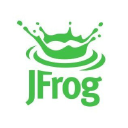
JFrog Xray
A software composition analysis (SCA) solution that identifies vulnerabilities in open-source components and license compliance violations.
| Category | DevSecOps & Pipeline Security |
|---|---|
| This page updated | 11 months ago |
| Pricing Details | Contact for pricing details. |
| Target Audience | DevSecOps teams, software developers, security professionals. |
JFrog Xray addresses the critical security and compliance challenges in software development by providing a comprehensive software composition analysis (SCA) solution. This tool natively integrates with JFrog Artifactory, allowing DevSecOps teams to proactively identify vulnerabilities in open-source components and license compliance violations before they reach production.
The technical architecture of Xray is built around deep recursive scanning, which examines all underlying layers and dependencies of components, including those packaged in Docker images and zip files. This approach leverages a robust vulnerability database that aggregates data from multiple sources such as NVD, GitHub, Ubuntu, Debian, Red Hat, and PHP, as well as insights from the JFrog Security Research Team. Xray's integration with Artifactory grants it access to extensive metadata, enabling detailed impact analysis and component graph visualization to show how an issue in one component affects others.
Operationally, Xray allows administrators to configure and manage resources selectively, avoiding intensive analysis processes by manually selecting repositories, builds, and release bundles to be indexed. The tool also supports custom API-driven automation through an open REST API, enabling tailored automated analysis regimens. Xray Watches provide a flexible framework for viewing and managing security and license violations, allowing teams to define policies and automatic actions based on predefined rules and criteria.
Key technical details include the ability to scan CycloneDX SBOM files in JSON and XML formats, support for Chainguard image scanning, and the detection of malicious packages in Hugging Face ML models. However, it is important to note that the tool's effectiveness can be influenced by the complexity of the component graph and the volume of artifacts being analyzed, which may impact performance and require careful configuration to optimize resource utilization.